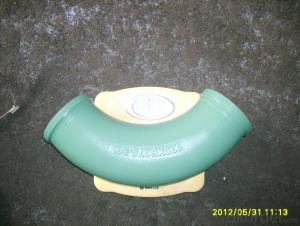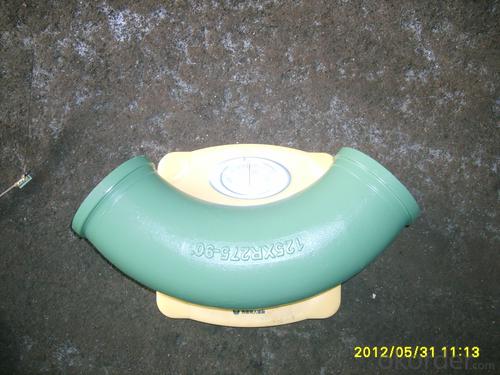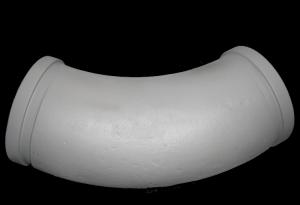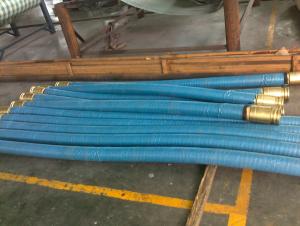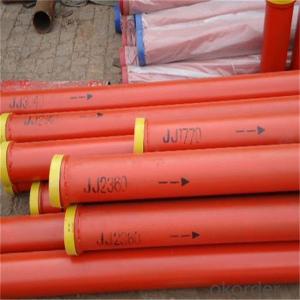Concrete Pump Truck Parts Elbow Bend R275 DN125 148Flange 30DGR Casting
- Loading Port:
- China Main Port
- Payment Terms:
- TT OR LC
- Min Order Qty:
- -
- Supply Capability:
- -
OKorder Service Pledge
Quality Product, Order Online Tracking, Timely Delivery
OKorder Financial Service
Credit Rating, Credit Services, Credit Purchasing
You Might Also Like
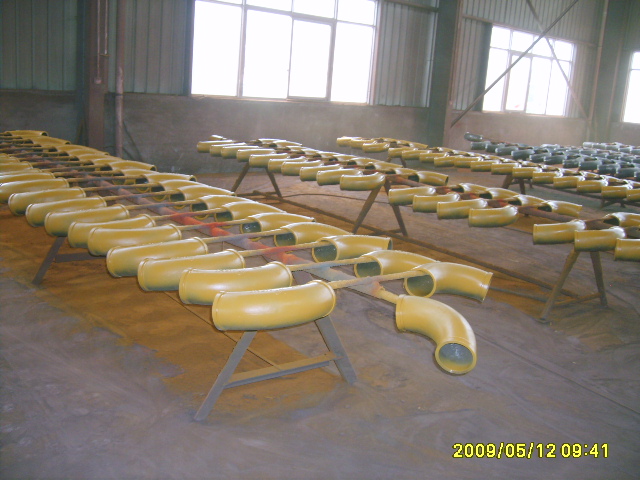
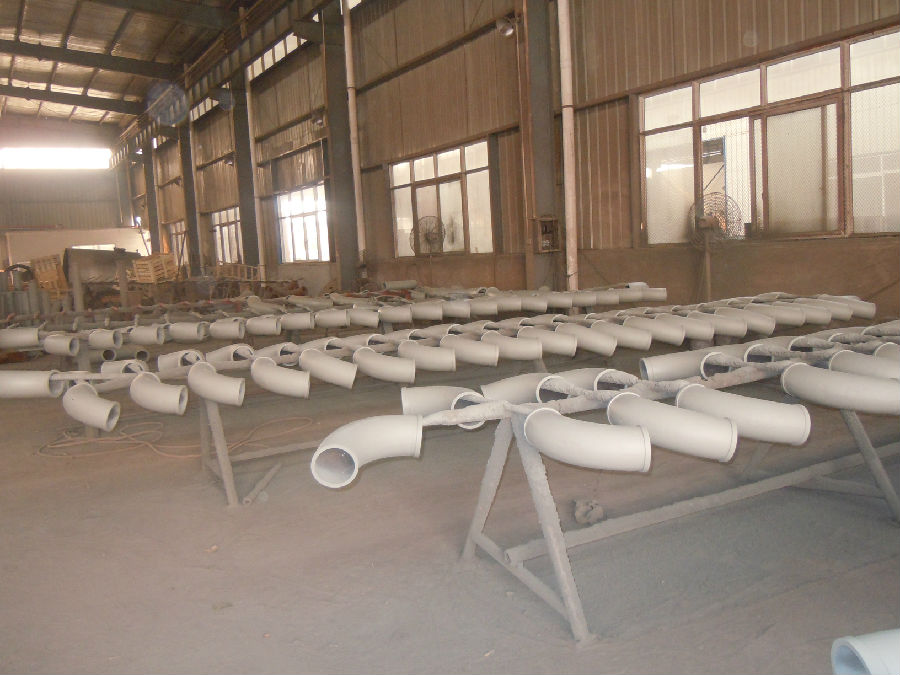
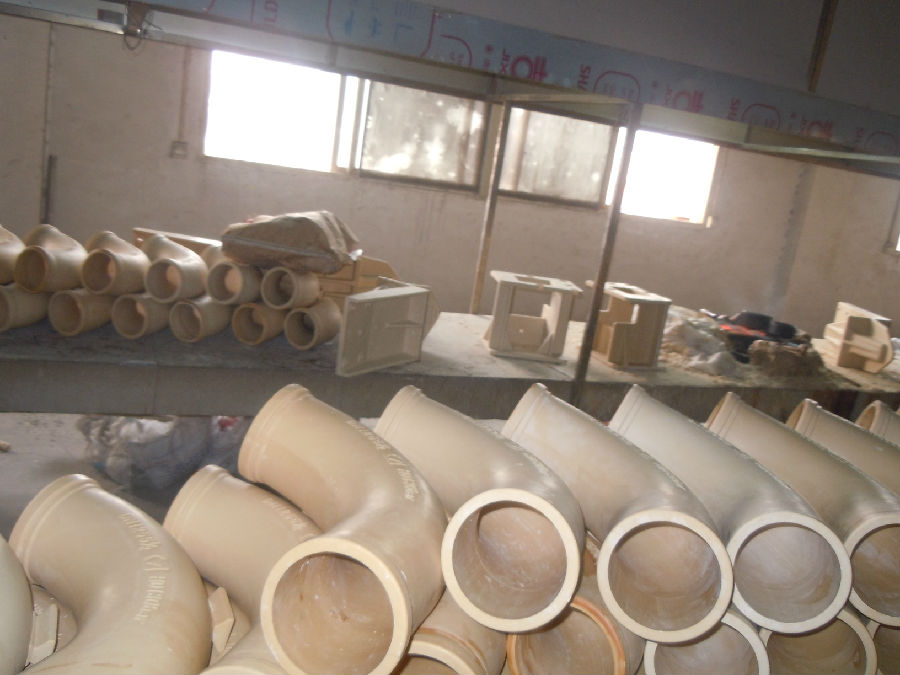


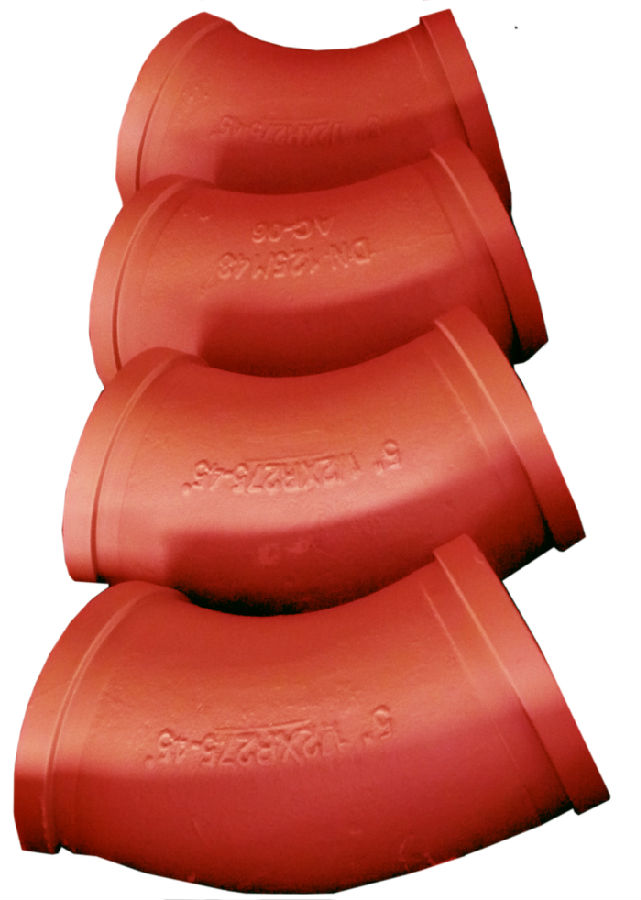
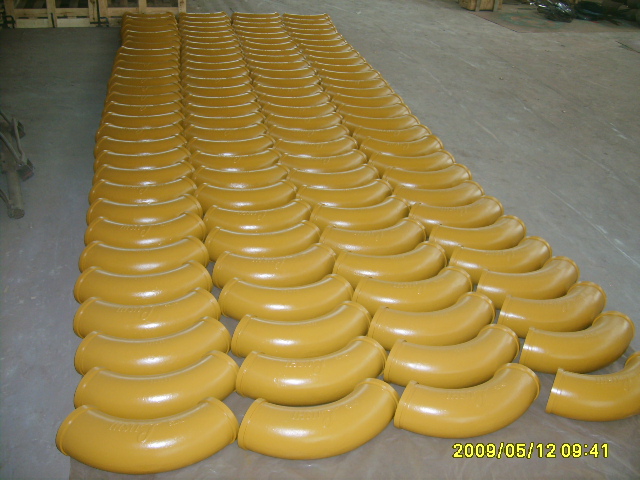
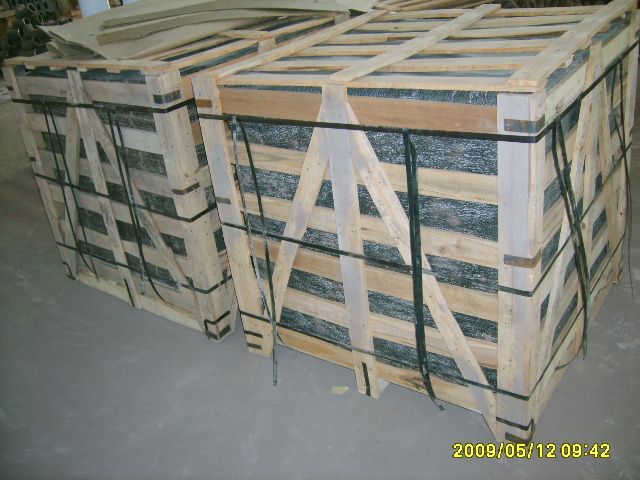
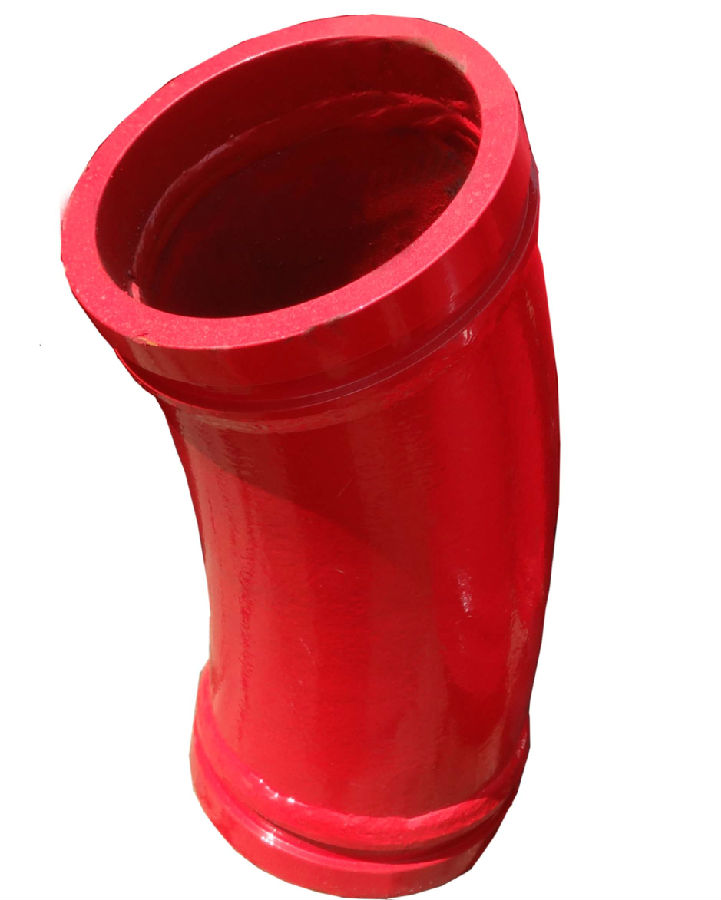
Product Description:
Product Name: Concrete Pump ELBOW DN125
1. Specification of Concrete Pump ELBOW DN125
Dimensions: DN125
Flange: SK, ZX, F&M
Degree: 30°
Material: #20 steel, ST52
Thickness: 4.5mm,6mm,7.1mm,7.5mm,10mm,
Working pressure: 180MPa
Notes: total series of concrete pump ELBOW for different brand concrete pump(PUTZMEISTER, SCHWING, CIFA, SANY, ZOOMLION, IHI, KYOKUTO Etc) available from us.
2. Application of Concrete Pump ELBOW DN125
Widely used on concrete pump truck, concrete placing boom, trailer concrete pump etc, for concrete delivery pipe connection.
Our concrete pump bends have been successfully exported to many countries from 1998, Our main markets as below: Middle East, Southeast Asia, America, Brazil, Italy, Russia, South Africa etc
Aiming at the largest concrete pump parts manufacturer, and reliable, professional supplier in China, we can supply concrete pump elbows, delivery pipes, casting or forging couplings, end rubber hoses, rubber pistons, tungsten wear plates, delivery cylinders, and other hydraulic parts, one stop service for your concrete pump parts and accessory business.
3. Package and Delivery of Concrete Pump ELBOW
Every 30pcs put in one seaworthy wooden box, and 20 boxes in one 20feet container.
Product Name: Concrete Pump ELBOW DN125
1. Specification of Concrete Pump ELBOW DN125
Dimensions: DN125
Flange: SK, ZX, F&M
Degree: 30°
Material: #20 steel, ST52
Thickness: 4.5mm,6mm,7.1mm,7.5mm,10mm,
Working pressure: 180MPa
Notes: total series of concrete pump ELBOW for different brand concrete pump(PUTZMEISTER, SCHWING, CIFA, SANY, ZOOMLION, IHI, KYOKUTO Etc) available from us.
2. Application of Concrete Pump ELBOW DN125
Widely used on concrete pump truck, concrete placing boom, trailer concrete pump etc, for concrete delivery pipe connection.
Our concrete pump bends have been successfully exported to many countries from 1998, Our main markets as below: Middle East, Southeast Asia, America, Brazil, Italy, Russia, South Africa etc
Aiming at the largest concrete pump parts manufacturer, and reliable, professional supplier in China, we can supply concrete pump elbows, delivery pipes, casting or forging couplings, end rubber hoses, rubber pistons, tungsten wear plates, delivery cylinders, and other hydraulic parts, one stop service for your concrete pump parts and accessory business.
3. Package and Delivery of Concrete Pump ELBOW
Every 30pcs put in one seaworthy wooden box, and 20 boxes in one 20feet container.
- Q: What are the different types of concrete pump wear rings?
- There are several different types of concrete pump wear rings that are commonly used in the construction industry. The most common types include: 1. Metallic Wear Rings: These wear rings are typically made of hardened steel or stainless steel. They are highly durable and can withstand the abrasive nature of concrete. Metallic wear rings are designed to be long-lasting and provide excellent wear resistance. 2. Polyurethane Wear Rings: Polyurethane wear rings are made from a high-performance polymer material. They are known for their exceptional resistance to abrasion, impact, and chemical exposure. Polyurethane wear rings are often preferred for their flexibility and ability to provide a tight seal, reducing leakage and improving pump performance. 3. Ceramic Wear Rings: Ceramic wear rings are made from a high-density ceramic material, such as alumina or zirconia. They are extremely hard and have excellent resistance to wear and corrosion. Ceramic wear rings are commonly used in high-pressure applications where there is a need for superior durability and performance. 4. Composite Wear Rings: Composite wear rings are made by combining different materials, such as metal and polymer, to create a hybrid material. These wear rings offer the advantages of both materials, such as the strength of metal and the flexibility of polymers. Composite wear rings are often used in applications where a balance between durability and flexibility is required. Each type of wear ring has its own unique advantages and considerations. The choice of wear ring depends on various factors, such as the specific application, operating conditions, and budget constraints. It is important to consult with experts or manufacturers to determine the most suitable wear ring for a concrete pump.
- Q: What is the purpose of a concrete pump hopper agitator motor?
- To ensure a smooth and consistent flow of concrete within the hopper, the concrete pump hopper agitator motor serves its purpose. It takes responsibility for mixing and agitating the concrete mixture, preventing any settling or thickening. By keeping the concrete in a fluid state, this motor ensures easy pumping and distribution through the delivery system. Absence of the agitator motor can result in the concrete mixture becoming stiff, causing blockages and delays in the pumping process. Ultimately, the concrete pump hopper agitator motor's aim is to maintain the quality and efficiency of concrete pumping operations by ensuring a well-mixed and smooth flow.
- Q: How can one extend the lifespan of concrete pump spare parts?
- To extend the lifespan of concrete pump spare parts, there are several measures that can be taken: 1. Regular maintenance: It is crucial to perform regular maintenance on the concrete pump spare parts. This includes cleaning, lubricating, and inspecting the parts for any signs of wear or damage. By addressing any issues early on, you can prevent further damage and prolong the lifespan of the parts. 2. Proper storage: When not in use, it is important to store the spare parts in a clean and dry environment. Exposure to moisture, dust, and other contaminants can lead to corrosion and deterioration of the parts. Storing them in a designated area with appropriate protection can help prevent these issues. 3. Quality parts: Investing in high-quality spare parts can greatly influence their lifespan. Opting for reputable brands and manufacturers that produce durable and reliable parts can ensure their longevity. Although they may be more expensive initially, they will likely save you money in the long run as they will require less frequent replacement. 4. Proper usage: Following the manufacturer's guidelines and instructions for the concrete pump spare parts is crucial. Overloading or operating the equipment improperly can put excessive strain on the parts, leading to premature wear and tear. Using the parts within their recommended capacity and following proper operating procedures will help extend their lifespan. 5. Training and supervision: Ensuring that operators and maintenance personnel are properly trained and supervised can have a significant impact on the lifespan of concrete pump spare parts. Educating them on best practices, proper handling, and maintenance techniques will help prevent misuse or mishandling that can result in damage to the parts. 6. Regular inspections: Conducting regular inspections of the spare parts can help identify any potential issues early on. This can include checking for signs of wear, damage, or misalignment. By addressing these issues promptly, you can prevent further damage and extend the lifespan of the parts. By implementing these measures, you can significantly extend the lifespan of concrete pump spare parts, reducing downtime and improving efficiency in construction projects.
- Q: How can you determine when a concrete pump pipe needs to be replaced?
- Determining whether a concrete pump pipe requires replacement involves several factors to consider. 1. Visual Examination: Thoroughly inspect the pipe visually, searching for cracks, damages, or indications of wear and tear. Pay close attention to the pipe's ends where it connects to the pump and nozzle, as these regions are more susceptible to damage. 2. Performance Assessment: Observe the concrete pump's performance. If there is a decline in pumping efficiency, such as reduced output or difficulties in maintaining pressure, it may indicate a pipe problem. Furthermore, excessive leakage or blockages in the pipe could signify the need for replacement. 3. Age and Usage: Take into account the pipe's age and the extent of its usage. Concrete pump pipes have a limited lifespan, and over time and extensive use, they can deteriorate and lose their structural integrity. If the pipe is old and has undergone substantial use, it might be time for a replacement. 4. Regular Maintenance and Repairs: Frequent repairs or maintenance on the pipe could suggest that it is approaching the end of its lifespan. While regular maintenance can extend the pipe's life, if repairs are becoming more frequent and costly, it may be more cost-effective to replace it. 5. Safety Considerations: Prioritize safety when deciding on pipe replacement. If there are significant structural issues or concerns about the pipe's ability to handle pressure, it is crucial to replace it to prevent potential accidents or hazardous situations. Ultimately, the decision to replace a concrete pump pipe should be based on a combination of visual inspection, performance evaluation, age, usage, regular maintenance, and safety considerations. It is advisable to seek guidance from a professional or experienced technician who can assess the pipe's condition and offer expert advice on whether replacement is necessary.
- Q: What are the signs of a malfunctioning concrete pump outrigger?
- There are multiple indicators that point towards a malfunctioning concrete pump outrigger. 1. An uneven or unstable platform may suggest that the outrigger is not functioning properly. This can be observed when the pump is not level or when the platform exhibits excessive movement or shaking. 2. The presence of hydraulic fluid leaks in the outrigger's hydraulic system is a telltale sign of malfunction. If you notice puddles or stains on the ground caused by hydraulic fluid, it signifies a problem. 3. If the outrigger is slow to extend or retract, or if it does not respond to the controls, it indicates a malfunction. This can jeopardize the stability of the pump and should be taken seriously. 4. Unusual noises emanating from the outrigger, such as grinding, whining, or knocking sounds, can be indicative of mechanical issues or loose components. Ignoring these noises may lead to underlying problems that require attention. 5. It is crucial to visually inspect the outrigger for any visible damage, such as bent or cracked components, loose bolts, or missing parts. These physical signs of damage can impair the functionality and stability of the outrigger. Regular inspection and maintenance of the concrete pump outrigger are essential for ensuring safe and efficient operation. If any of these signs are present, it is advisable to cease using the pump and have it inspected and repaired by a qualified professional to prevent further damage or accidents.
- Q: What is the function of a concrete pump hopper filter?
- The function of a concrete pump hopper filter is to prevent large debris and foreign objects from entering the pump system, ensuring smooth and uninterrupted flow of concrete and protecting the pump from potential damage.
- Q: Can I get spare parts for both concrete pumps with and without lubrication systems?
- Spare parts are available for both lubricated and non-lubricated concrete pumps. Various manufacturers and suppliers offer a diverse selection of spare parts for different concrete pump types and models. These spare parts encompass valves, cylinders, pistons, seals, hoses, filters, and more. Regardless of whether your concrete pump is equipped with a lubrication system or not, you can easily locate the required spare parts for its maintenance and repair. It is advisable to consult the manufacturer or a reliable supplier to ensure the procurement of accurate spare parts that match your specific concrete pump model.
- Q: What is the function of a concrete pump hopper grate clamp?
- A concrete pump hopper grate clamp is a device used to secure the hopper grate in place on a concrete pump. The hopper grate is an essential component of the pump that acts as a filter to prevent large debris and foreign objects from entering the pump system. The clamp is designed to hold the hopper grate tightly in place, ensuring that it remains secure during the pumping process. By keeping the hopper grate in place, the clamp helps to maintain the integrity of the pump system and prevent any potential damage or blockages that could occur from the entry of unwanted materials. Overall, the function of a concrete pump hopper grate clamp is to provide a secure and reliable way to keep the hopper grate in place, allowing for smooth and efficient concrete pumping operations.
- Q: How often should hydraulic oil filters be replaced in a concrete pump?
- Hydraulic oil filters in a concrete pump should be replaced regularly according to the manufacturer's recommendations. Typically, it is recommended to replace hydraulic oil filters every 500 to 1,000 hours of operation or annually, whichever comes first. However, the specific replacement frequency may vary based on factors such as the operating conditions, environment, and the quality of hydraulic oil used. Regular maintenance and monitoring of the filter's condition can help determine the appropriate replacement interval to ensure efficient and reliable performance of the concrete pump.
- Q: How often should concrete pump remote control batteries be replaced?
- Concrete pump remote control batteries should be replaced as needed, typically when they no longer hold a charge or fail to power the remote control effectively. The frequency of replacement will depend on factors such as battery quality, usage, and maintenance.
Send your message to us
Concrete Pump Truck Parts Elbow Bend R275 DN125 148Flange 30DGR Casting
- Loading Port:
- China Main Port
- Payment Terms:
- TT OR LC
- Min Order Qty:
- -
- Supply Capability:
- -
OKorder Service Pledge
Quality Product, Order Online Tracking, Timely Delivery
OKorder Financial Service
Credit Rating, Credit Services, Credit Purchasing
Similar products
Hot products
Hot Searches
Related keywords
